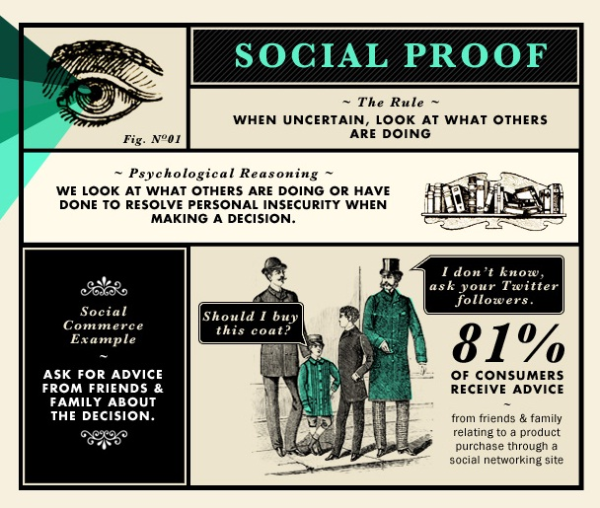Content fuels a lot of our marketing efforts. This is true for SEO, PPC, and pretty much every other marketing venture you can think of.
It even fuels email outreach, which is one of the world’s most common and effective forms of marketing. This rings especially true for ecommerce businesses.
But we’re not just talking about what you write when we say content. Content can mean many things, from images, to video, to audio clips.
An ecommerce business can leverage their quality content to improve the effectiveness of an email marketing campaign. That means you’ll boost your open rate, click-through rate, and conversion rate, all by creating better content that is optimized and targeted to your specific audience.
In this article, you’ll see a number of tips regarding email marketing content for ecommerce businesses, and we’ll show you how you can implement these content-based initiatives to create a more impactful email marketing campaign.
Understand your audience
Before you start creating content, it’s important to remember who you’re creating that content for.
Who is your intended audience? What are the common issues they face? How can your content directly solve their problems?
In order to understand how you should be directing your content, you first have to create a series of buyer personas. These are an in-depth look at some of your most common customers. It can list a wealth of information for various sections of your demographic.

For example, how old are your customers, on average? If you know that, it will be easier to determine what kind of content would best suit them. If you’re mostly catering to senior citizens, then you’re not going to use a lot of modern slang or have lots of complex videos and features in your email messages.
On the other hand, if you’re marketing to a younger crowd, then you’ll want to use some modern slang, maybe a few emojis, and speak on their level.
Your tone is dictated by your buyer personas, but so is the content format that you’re relying on.
For example, if you discover that your audience prefers video content, you’d focus more heavily on producing informative videos. If they enjoy podcasts, then it would be beneficial to create audio shows that you can send out as part of your email marketing campaign.
That’s why it’s so important to understand your demographic on every level. If you don’t intimately know them, their issues, and their preferences, you run the risk of creating content that no one is going to care about.
Use various content formats
We touched on this a bit in the previous section, but you shouldn’t just rely on text. You have to change it up, and embrace other forms of content.
Most notably, you should be marketing your products via email with embedded videos. That’s because video content has a higher engagement rate than text or photos. People tend to retain more of that information for longer periods of time.
From an ecommerce perspective, try sending out video content through your email marketing blasts that show some of your products or services in action. Create compelling video content that will make your audience sit up and take notice of your products. Show them, rather than tell them, how these products can help alleviate their pain points and improve their lives.
Never underestimate the value of visual icons. They’re a great way to break up long walls of text in the body of your emails.
The example below, from AllState Insurance, perfectly demonstrates how to effectively use visual icons to make your content stand out.

Then there’s podcasting. Don’t overlook this easy-to-produce audio outlet. In the U.S. alone, more than half of all consumers over the age of 12 listen to podcasts. That’s a huge number.

You can create audio content about your industry. It doesn’t have to just be a long commercial for your products. Let’s say you run an ecommerce store that sells gardening equipment.
Try producing a gardening podcast and end every episode by hyping the products that you sell. Then, send every episode of your podcast out to your email subscriber list. They’re clearly interested in gardening, so you’re providing them with a valuable service that just happens to push some of your products.
Personalization
People don’t like to think that the emails you’re sending them are mass produced marketing blurbs.
Even if that’s exactly what they are, you have to make it seem as though they are not.
That’s where email personalization comes into play. Personalization efforts allow you to alter your content specifically for the person that is receiving it.
A lot of that has to do with inserting the name of your prospect into the subject line and body of the email, making it appear as though someone took the time to personally sit there and type this email out specifically for them.
But when you have an email subscriber list of more than 2,000 people, that isn’t feasible. It would take you all day (or more) just to send out one email blast.
Thankfully, there are a number of email marketing tools that will help you personalize your content with the push of a button. And, many of them are free! Using one of these tools, every single email that goes out will have the name of your recipient front and center, creating a more welcoming and personalized experience.
To go back to our gardening supplies ecommerce store example from before, you don’t want to send an email out with a subject line that just reads “Get These Tools in Time for the Fall Harvest.”
That screams sales and marketing email and your prospect is just going to tune out.
But, if you’re sending it to someone named Mike, and the subject line reads, “Hey, Mike. Are you ready for the fall harvest?” you have a better shot of Mike opening your email and interacting with your brand.
Create a newsletter
If you have a blog (and you should!) then you have an opportunity to create an email newsletter that can speak to the needs of your audience.
Consider releasing a bi-weekly or monthly email newsletter that showcases your blog content. Going back to our gardening example, you could create a gardening newsletter that compiles several weeks’ worth of articles, along with photos and videos.
Obviously, you won’t be able to fit all of your blogs in a one-page newsletter, which is why you should have a short summary of every article somewhere on the page, with a link to the full article. This allows you to provide the recipient with more content and also a gateway to move along to your website.
You can hype your products and services in the newsletter like one might with ads in a newspaper or magazine. This will help you draw attention to any promotions you’re currently running. But the articles should all be educational and speak to the issues that your audience deals with.
Use social proof
Social proof is an incredibly effective form of user generated content.
It speaks to the impact that societal influence has on our buying decisions. If people can see their peers using your products effectively, they’re more likely to make a purchase to achieve those results for themselves.

But how can you use social proof content as part of your ecommerce email marketing plan?
You could send out case studies and testimonial videos that showcase these satisfied customers. A peer talking about their needs and how a certain product met those needs can go a long way toward improving your click-through rate and conversion rate.
People don’t trust marketing messaging. That’s been true for many years. We’re inundated with ads to the point where we don’t trust the company line. However, user generated content is much more trustworthy.
This is the word of someone who is a lot like your other prospective customers. They have many of the same pain points. By highlighting these individuals, you have a real shot at pushing more prospects into your marketing funnel.
In conclusion
Email marketing can be a highly effective venture for an ecommerce business, but only if you’re backing it up with quality content. Utilize the content tricks and tips listed above to craft various different content formats that appeal to your target audience in both outreach and follow up emails.
By engaging your audience in a way that matches their wants and needs, you’ll be able to increase your open rates, generate more clicks, and convert more sales.


